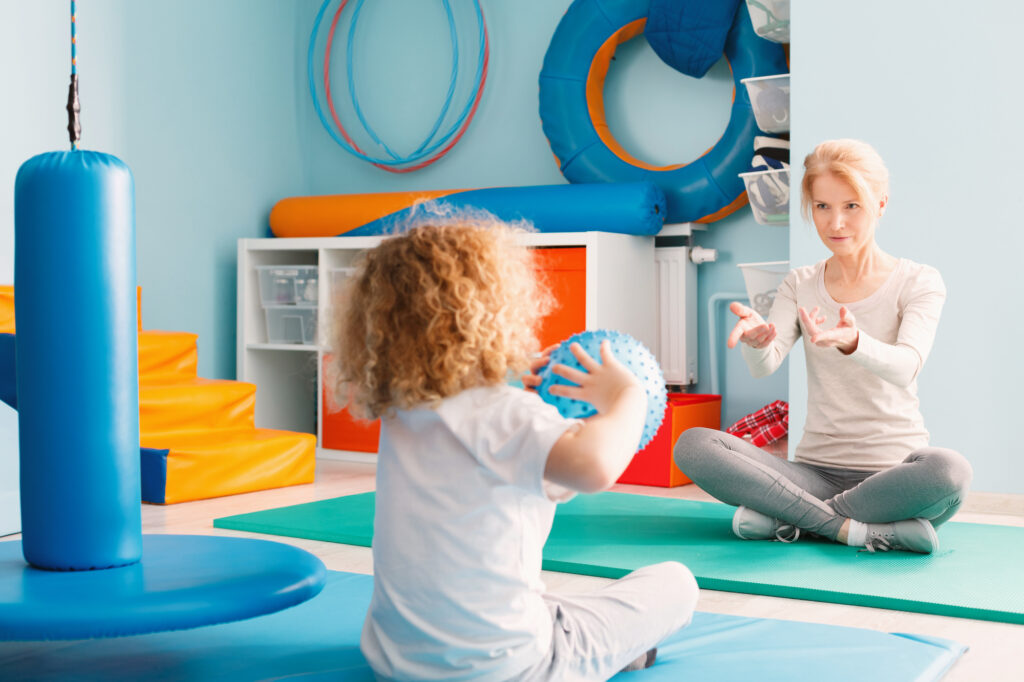Group Activities Sessions
COMING SOON
Early Sensory Explorers
Hop Gross Motor Skill
Fantastic Fun Fine Motors Skills
Jumping Kangaroos
Hopping Bunnies
“The neurological process that organises sensation from one’s own body and from the environment and makes it possible to use the body effectively with the environment.” (1972)
Sensory integration therapy should only be carried out by a qualified SI Practitioner: Our senior therapist Ollene Cunden has been qualified with a postgraduate training in SI in United Kingdom. This training involves developing a detailed understanding of the neuroscience and evidence base underpinning sensory integration as well as developing expertise in assessing and providing intervention for people with sensory integration problems.
SI therapy (or SI interventions) include structured exposure to sensory input, movement therapy, balance treatments, carefully designed and customised physical activities and accommodation (e.g., changes to the environment or routine). An SI Practitioner may work with the client, their family, carers, school, other allied health professionals or employer (as appropriate) to create a ‘sensory diet’ for that specific client. A sensory diet is a recommended suite of activities and accommodations (that can be carried out both in therapy sessions and at home or school) to help give that individual the sensory input they need.
What happens if the signals coming from our senses are too weak? Or too strong? Or if our brain over or under reacts to the signals? Or if the brain can’t make sense of those signals?
The individual will experience sensory integration difficulties, and this may be evident in their behaviour. Some individuals may experience the sensory inputs as overwhelming and upsetting, leading to ‘sensory overload’. Individuals may be over-sensitive to sensory input, under-sensitive, or both.
It’s common for all of us to occasionally feel under or over-sensitive to sensory inputs; for example, music or bright lights may feel too much if you have a headache; you can feel uncoordinated or find it hard to focus if you are tired. But these feelings are temporary and wouldn’t normally affect your day-to-day functioning in the long term. Sensory integration or sensory processing difficulties are long-term and have a big impact on everyday life and learning. But with professional advice and, if appropriate, therapy much can be done to support improvements in a person’s daily functioning.
Some individuals may have difficulty processing input from one particular sense (e.g., visual processing), whereas other individuals may experience difficulty integrating inputs from more than one sensory system. Note that sensory integration difficulties are different from sensory impairments such as hearing loss, although sometimes the two result in similar behaviours. For example, an individual with perfect hearing can find it difficult to follow conversations if they have difficulties processing the incoming auditory signals.
Four categories of sensory integration difficulties have been identified (Parham and Mailloux (2015):
Problems with sensory modulation occur when our brain either over-responds to, or under response to sensory information. For example, if someone over responds to touch, they may be very aware of the label on the back of their clothes. If someone is under-responsive to touch, they may not notice someone tapping them on the shoulder.
It has been found that people can be over-responsive or under-responsive in all the different senses; they can be over-responsive in one sense and under-responsive in another. For some people, they can be over-responsive and under-responsive within the same sense. Responsiveness can be dependent on a situation; for example, a stressful situation can make us more and sometimes less aware of the sensation.
Praxis is the medical term for how our brain plans for and carries out movements we have not done before. For children, this could be learning to jump; for adults, it may be learning to drive or use chopsticks.
When sensory information is not properly processed, it can make new movements very difficult because the child does not have the ability to make sense of the different incoming sensory information. So, they struggle to work out where their body is and how much force, speed and direction are needed to do a new movement. We call difficulties with praxis dyspraxia or developmental coordination disorder.
These problems are a result of problems with our vestibular sense and can result in poor balance and difficulties with coordinating two sides of the body. Balance and coordination problems could be a result of a range of different problems: a qualified SI practitioner will be able to identify whether the difficulties are a result of problems with the vestibular system.
This is when the brain has difficulties making sense of the sensory information it receives. If these problems are with touch sensory information, an individual can seem clumsy or use too much or too little force when doing things. A person with visual perceptual problems may have difficulties with finding objects in cluttered environments or finding a word on a page.
